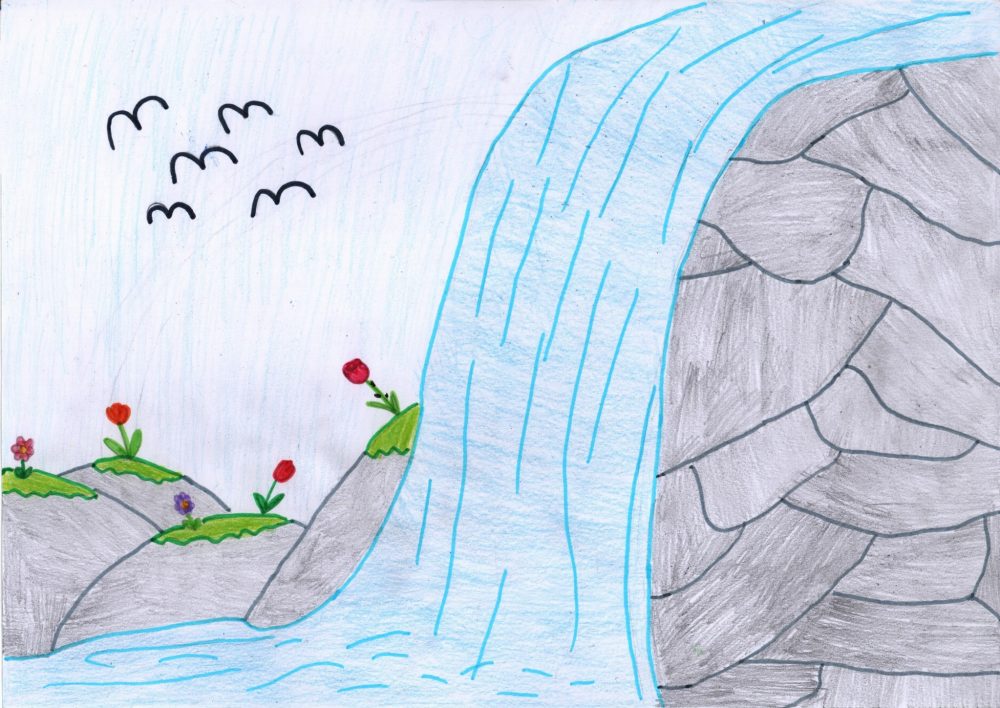“Everywhere where children live, either in the village or in the town, it can also be heard and seen how they play and enjoy themselves. The children play is such a natural thing and need for a child as breathing.” (Pospíšilová 2000). Impulses to children play are found in various environments: first in the family circle, closest friends and home, later in school, hobbies etc.
A great number of children games are kept through the folk tradition and rich records in the collection fund. These manifestations show a remarkable richness of forms and educational use at the same time. They might be differentiated according to various points of view, e. g. year season, nationality, sex, movement, stage properties etc. Traditional children plays kept by spontaneous transmitting in the family or thanks to institutionalized education, are completed by new playful manifestations of children, influenced by the conditions of social life. The nature brings, despite the space and time, the significant stimuli to children plays with its rich forms of phenomena.
The educational significance of children plays is verified by many generations. It is known that it has belonged to spontaneous activities of children since a long time ago, in which different sides of their personalities develop in an entertaining and natural way. The requirement for play use, resp. aspect of playfulness in educational work penetrates all progressive pedagogical systems, starting with recommendations by Jan Ámos Komenský. Let us e. g. remember Komenský’s idea that by playing children are taught to lead the mind to gentleness, movements to skilfulness and body to health (Mišurec 2007). Thus the children plays area is a significant means of physical, spiritual, rational, aesthetic, work and moral education and at the same time an important stimulus of will to other activities. In school education, plays make the educational process more pleasant and varied and they help pupils to relax. The offer many impulses to creative manifestations of children, in various forms and areas given by syncretism of the children play.
References
- Bartoš, F. (1898). Naše děti. Jejich život v rodině, mezi sebou a v obci, jejich poesii, zábavy, hry i práce společné popisuje František Bartoš [Our Children. Their Life in a Family, between Each Other and in the Village, Their Poetry, Entertainment, Plays and Work Described by František Bartoš]. Praha: J. Otto.
- Erben, K. J. (1886). Prostonárodní české písně a říkadla [National Czech Songs and Rhymes]. Praha: A. Hynek.
- Frolec, V. (ed.) (1980). Dítě a tradice lidové kultury [Child and Folk Culture Tradition]. Lidová kultura a současnost. Svazek 6. Brno: Blok.
- Komenský, J. A. (1947). Škola na jevišti. [Schola ludus. Pars IV-V.]. Brno: Komenium, učitelské nakladatelství.
- Komenský, J. A. (1972). Informatorium školy mateřské [Informatorium of Nursery School]. Povinná četba pro pedagogické školy – třídy pro přípravu učitelek mateřských škol. Praha: Státní pedagogické nakladatelství.
- Mátlová-Uhrová, L. (1978). Děti na Hané: jejich výtvarné tvořivé hry a zábavy v přírodě [Children in the Haná Region: Their Art Creative Plays and Entertainment in Nature]. Prostějov: Okresní kulturní středisko.
- Mišurec, Z. (2007). Dětské hry [Children Play]. In S. Brouček & R. Jeřábek (eds.). Lidová kultura: národopisná encyklopedie Čech, Moravy a Slezska. 2. svazek. Praha: Mladá fronta, pp. 132–133.
- Plicka, K., Volf, F. & Svolinský, K. (1947–1960). Český rok v pohádkách, písních, hrách a tancích, říkadlech a hádankách. Jaro. Léto. Podzim. Zima [Czech Year in Fairy Tales, Songs and Dances, Rhymes and Riddles. Spring. Summer. Autumn. Winter]. Praha: Družstevní práce; Státní nakladatelství krásné literatury, hudby a umění.
- Pospíšilová, J. (2000). Dětský folklor [Children Folklore]. In J. Jančář et al. (eds.). Lidová kultura na Moravě. Vlastivěda moravská. Země a lid. Nová řada. Svazek 10. Strážnice: Ústav lidové kultury ve Strážnici; Brno: Muzejní a vlastivědná společnost v Brně, pp. 265–269.
- Svobodová-Goldmannová, F. (1958). Říkadla a hry slováckých dětí [Rhymes and Plays of Children from the Region of Slovácko]. Gottwaldov: Krajské museum.
- Václavek, M. (1902). Děti na Moravském Valašsku: jejich hry a jiné zábavy [Children in Moravian Walachia: Their Plays and Other Entertainment]. Jičín: Kabátník.
Module Overview
|
